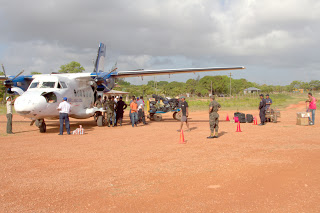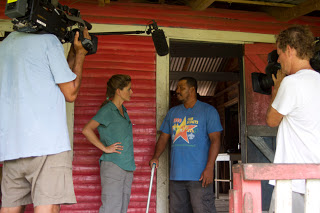I’m collecting oral histories from West Virginia war veterans. It’s not about “war stories” but about the human side of war, how it changed the men who fought and how they felt when they came home. So far, it has been a very powerful and meaningful experience for me.
I think one of the greatest things that will come out of this project is that families will learn something about the veterans. Yesterday, I interviewed a Bob Payne –my fiancee Beverly’s uncle. We were talking about the interview afterward and she learned for the first time that her uncle earned a Purple Heart serving in Korea. Bob was actually wounded by friendly fire when an artillery shell failed to launch properly and landed directly on his own mortar emplacement. With the typical attitude of a Marine, he could only stand to be away from the front for a couple days before he returned to service. Beverly didn’t know anything about it. In spite of loving the Marine Corps and being proud to have served in Korea, Bob also talked about occasionally waking up from combat nightmares 60 years later.
Another veteran spoke about his time in the South Pacific during World War II and the Battle of Ormoc Bay (he was frustrated, by the way, that no one had ever heard of this particular fight). Herman Bartlett’s role during General Quarters was to help supply ammunition to a 40 mm gun. His gun crew ended up shooting down a Japanese Kamikaze plane that day. Herman said the plane got so close before it exploded, he could see the expression on the pilot’s face. The twist to this story, however, is that Herman’s regular duty station—four hours on and eight hours off, seven days a week—was as the helmsman. Three kamikazes attacked his ship. They got two of them, but the third crashed into the ship’s bridge killing all but one member of the bridge crew, including the Captain. If it had been his turn at the helm, Herman would have died that day.
A third veteran this week served two tours in Iraq. Tom Bearfield’s second tour was in 2005 when the insurgency was heating up and road-side bombs, known as IEDs or improvised explosive devices, were a real problem. He was hauling fuel all around the country in tanker trucks. Tom is still haunted by a day when he was providing security for a convoy. From the gun mount of a Humvee, he watched a man pull his car off the side of the road so the convoy could pass. He said the man driving the car did everything right. Tom didn’t think anything more about the car…until it exploded. The car was filled with explosives and the blast seriously wounded the gunner of another Humvee. There was nothing Tom could have done to prevent it. In spite of that, there is still a measure of guilt that comes with the experience.
A quick production note, the finished multimedia documentary will have moving images, not static pictures like you see above. I simply added them this way so Youtube would allow me to upload them.









